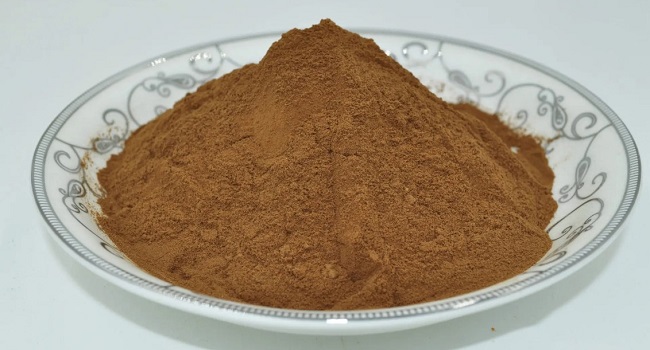In recent years, Maitake extract, derived from the seed entity of the Maitake(Grifola Frondosa), has garnered widespread attention from the scientific community and health enthusiasts due to its beneficial effects on human health. Rich in a variety of bioactive components such as flavonoids, bitter glycosides, and phenolic acids, these compounds work together to bring unexpected benefits to our health. From promoting cardiovascular health to anti-inflammatory and antioxidant properties, the benefits of Maitake extract cover a wide range of health areas, offering new perspectives and research directions in modern health science. Below, I will detail the benefits of Maitake extract for the human body.
Active Components in Maitake Extract
Maitake are nutritionally rich, as analyzed by the Institute of Nutrition and Food Hygiene of the Academy of Preventive Medicine and the Quality Inspection Center of the Ministry of Agriculture. Every 100 grams of dry Maitake contain 25.2 grams of protein, 18.68 grams of 18 essential amino acids (45.5% of which are essential amino acids), 3.2 grams of fat, 33.7 grams of dietary fiber, 21.4 grams of carbohydrates, and 5.1 grams of ash. Maitake are rich in various beneficial minerals, with high levels of potassium, phosphorus, and magnesium, followed by zinc, sodium, iron, and calcium, and also contain copper, selenium, chromium, etc. They are rich in vitamins, containing 109.7 mg of vitamin E, 11.47 mg of vitamin A, 20.72 mg of vitamin B, 17.0 mg of vitamin C, and 4.5 mg of carotene, leading among various edible fungi. The content of vitamin B1 and vitamin E is higher than that of general edible fungi. In addition, they contain various organic acids that promote healthy growth and intellectual development in children; arginine, lysine, and the umami-related amino acids aspartic acid and glutamic acid are also relatively high. Maitake extract is derived from Maitake, with a higher concentration of active components than the Maitake themselves.
What Benefits Do These Active Components Offer to the Human Body?
Polysaccharides are the main chemical and active components of Maitake extract, which can be divided into structural polysaccharides and extracellular polysaccharides. There are differences in polysaccharides from different regions or obtained by different extraction methods. Maitake polysaccharides are mainly heteropolysaccharides, with monosaccharide types including glucose, mannose, galactose, xylose, etc., predominantly D-glucose; the structure of Maitake polysaccharides mainly consists of glucans rich in β-1,6 and β-1,3 glycosidic bonds. Maitake polysaccharides are numerous and have various pharmacological activities, showing significant therapeutic effects in anti-tumor, anti-diabetes, anti-virus, anti-hyperlipidemia, and immune regulation, with broad development and utilization prospects.

Researchers have isolated over 20 kinds of steroid compounds from Maitake, mainly sterols and their derivatives, including 5α,8β-peroxy ergosta-6,22-dien-3β-ol, ergosterol, 3β,5α,6β-trihydroxy ergosterol, ergosterol peroxide, and ergosta-4,6,8,22-tetraen-3-one, among others.
5α,8β-Peroxy ergosta-6,22-dien-3β-ol: This is a special steroidal compound containing a peroxy group, potentially having anti-inflammatory and antioxidant properties.
Ergosterol: Ergosterol is an important steroidal compound, mainly found in fungi and also in some plants. It is a precursor of vitamin D2, which can be converted into vitamin D2 under sunlight, beneficial for bone health.
3β,5α,6β-Trihydroxy ergosterol: This compound contains three hydroxyl groups, potentially beneficial for cardiovascular health and anti-inflammatory.
Ergosterol peroxide: This is the peroxide form of ergosterol, potentially having antioxidant and anti-inflammatory properties.
Ergosta-4,6,8,22-tetraen-3-one: This compound has multiple unsaturated bonds, with potential anti-inflammatory and antioxidant health benefits.
Currently, the phenolic compounds isolated from Maitake are relatively few, mainly including ferulic acid, 2-hydroxy succinic acid, dihydroxyphenylacetic acid, 4-hydroxybenzoic acid, caffeic acid, coumaric acid, 3-hydroxy resveratrol, resveratrol, epicatechin gallate, p-coumaroyl quinic acid, and p-coumaroyl tartaric acid.
Ferulic acid: A common antioxidant, widely found in plants, especially effective for skin protection.
2-Hydroxy succinic acid: May have certain antioxidant activity.
Dihydroxyphenylacetic acid: This phenolic compound has antioxidant and anti-inflammatory properties.
4-Hydroxybenzoic acid: A widely existing phenolic compound, known for its antioxidant properties.
Caffeic acid: A powerful natural antioxidant, helps to combat free radicals.
Coumaric acid: Widely present in plants, with antioxidant and anti-inflammatory effects.
3-Hydroxy resveratrol: A derivative of resveratrol, with antioxidant and anti-aging properties.
Resveratrol: A well-known antioxidant, beneficial for cardiovascular health and anti-aging.
Epicatechin gallate: This compound is a major component of green tea, with strong antioxidant and anti-inflammatory properties.
p-Coumaroyl quinic acid and p-coumaroyl tartaric acid: These compounds may have antioxidant effects.
Maitake extract, due to its rich bioactive components, has a wide range of positive effects on human health. These components endow Maitake extract with strong antioxidant and anti-inflammatory properties, potentially helping to alleviate inflammation, protect cardiovascular health, and resist cell damage caused by free radicals. Additionally, other active components in Maitake extract may help to promote metabolism and kidney health. Due to its natural source and diverse health benefits, Maitake extract is considered a potential natural health product.


















